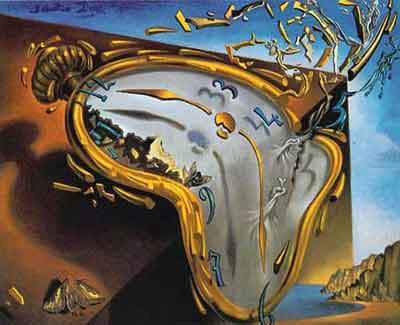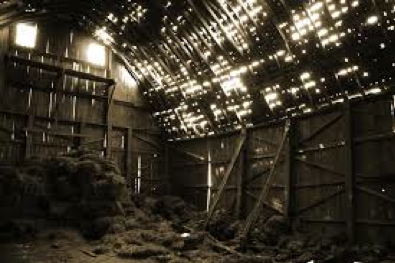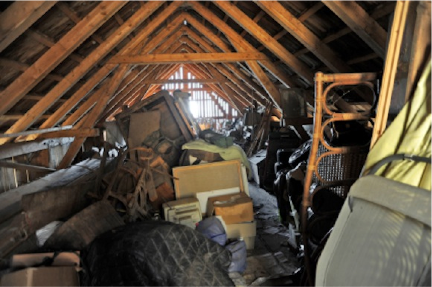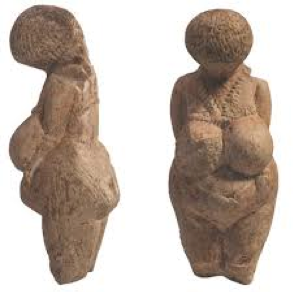
For some women there has been too much of mother impinging on a sense of time and space. There exists in the unconscious an array of fantasies involving a stopped clock. I find images about space to be psychic expressions about distance between people, about female genital/procreative space, and internal psychic space.
In her analysis Ms. C. created many spatial images connected to her wishes, fears, and transference story. The case of Ms. C. illustrates how changes in imagery of space and sense of time can undergo transformation.
I present descriptions of four dreams, my own musings, and images found on the Internet to help convey the feel and meaning of space and time. I preface the discussion of her dreams with Salvadore Dali who painted images of clocks defying expectations. They drape over tables and appear both solid and fluid like liquid.
In the images dreamt by Ms. C. you will see how her internal space/time clock gained movement.
INTERIOR OF A BARN
Early in her analysis Ms. C. tells me: “I dreamt of a barn. The inside of it was so dusty and dark. There were just a few cracks between boards that let light in. I could not see the ceiling very well. It was very high and little bits of straw in the air — so dusty. I was all alone.
Analyst: I felt present in this space with Ms. C. I felt as if I were sitting in this barn in my analytic chair. The most surprising aspect was that I could see the air with her. I could see little pieces of dust and straw floating through the air. There was a profound transmission of a feeling of timelessness and dusty space. I liked her description and how much it reached me. She was breaking her wish to be alone by telling me about her creation—the barn interior. I kept wanting to put birds in the picture—chickens by a bale of hay, doves cooing and flying in rafters. When I allowed myself to feel the vastness, the almost out of sight ceiling, I felt desperate and suffocated and aware of how lonely she was and how scary it was to feel that for her and for me.
SPACE WITH AFFECT AND DESIRE
This space, in the third year of analysis is one in need of furniture. Ms. C. is arguing with a salesman about rugs. She cannot decide what to buy and the idea of making a decision is agonizing. She recalls shopping for dining room chairs. None are exactly as she wants. The curve of the legs is wrong. Most importantly, she is afraid to express her disappointment and wants to scream at the salesman that she hates the imperfections of the world.
Analyst: This space is inhabited and full of desire and hatred and we worked in the transference. Although the salesman (analyst) did not have the right goods to sell to her, there are objects (old and new internal objects) in the room and affect about that. In some ways I felt invited to battle, to try to sell the possibility that space could be furnished. There is also a hint of time here as she thinks about the future. Hating the present helps start the frozen clock.
THE ATTIC
A dream in the fifth year of analysis involves Ms. C. discovering “junk in the attic.” She is delighted to find forgotten stuff and dismayed how frayed and moldy everything is. There are old photographs of a wedding on the floor that have been walked on and old bikes and parts of bikes, and books, and furniture. She is overwhelmed with the idea that she must clean up all that is there.
Analyst: She associates to junk and the junk she detests. We work on her thoughts about the inside of a woman’s body and the semen a man can put there. She is furious at all the babies that came after her birth and at her father who disappeared into his work and alcohol. She often claims the session by putting lateness into our space telling me how she is happy when she feels the space belongs to her and I am helpless. I have questions. Can I bear to want to put things into her, to stir her mind and plant thoughts? Am I too much for her? Is she wanting me to feel like I violate her because she so much wants our intimacy?
WOMEN
A wonderful magical house. In the sixth year of analysis, Ms. C. has a dream she fills with her wishes—a wonderful house, a magical house, a house where only women live. Each woman can have a baby of her own. Each woman has her own oven for cooking and her own womb for procreation, and no men are allowed in.
Analyst: Ms. C. loves her dream, she loves that her mind thought of it. The room feels pregnant and she sounds so happy in this imagined house of fertility, wombs, ovens, and good food. I imagine both of us pregnant and full. She is furious when I say that men have something to do with women getting pregnant. I have intruded on her grand wish and feel bad about it, perhaps it was too delicious for me. She is elated that she can make part of her dream come true, but not all of it. Conceiving mentally of pregnancy binds one to time—a time before pregnancy, during gestation, and a time of birth when one becomes a mother and another comes to be. With the fuller recognition of space and time, she begins new projects and searches for a relationship that will be fulfilling, even if imperfect.
Nancy R. Goodman, Ph.D., is a training and supervising analyst with the Contemporary Freudian Society, Washington DC Program and the IPA. She is interested in unconscious fantasy, witnessing of individual and mass trauma, enactments, and psychoanalysis and film. She is the leader of a CIPS study group on enactments. Her most recent publications include: The Power of Witnessing: Reflections, Reverberations, and Traces of the Holocaust—Trauma Psychoanalysis, and the Living Mind (co-editor/writer with Marilyn B. Meyers); Battling the Life and Death Forces of Sadomasochism: Clinical Perspectives (co-editor writer with Harriet I. Bassaeches and Paula L Ellman); “Enactment: Opportunity for Symbolising Trauma” (Ellman & Goodman) in Absolute Truth and Unbearable Psychic Pain: Psychoanalytic Perspectives on Concrete Experience (ed. A. Frosch), as well as being editor of Psychoanalysis: Listening to Understand–Collected Papers of Arlene Kramer Richards. She maintains a psychoanalytic practice in Bethesda, MD.





